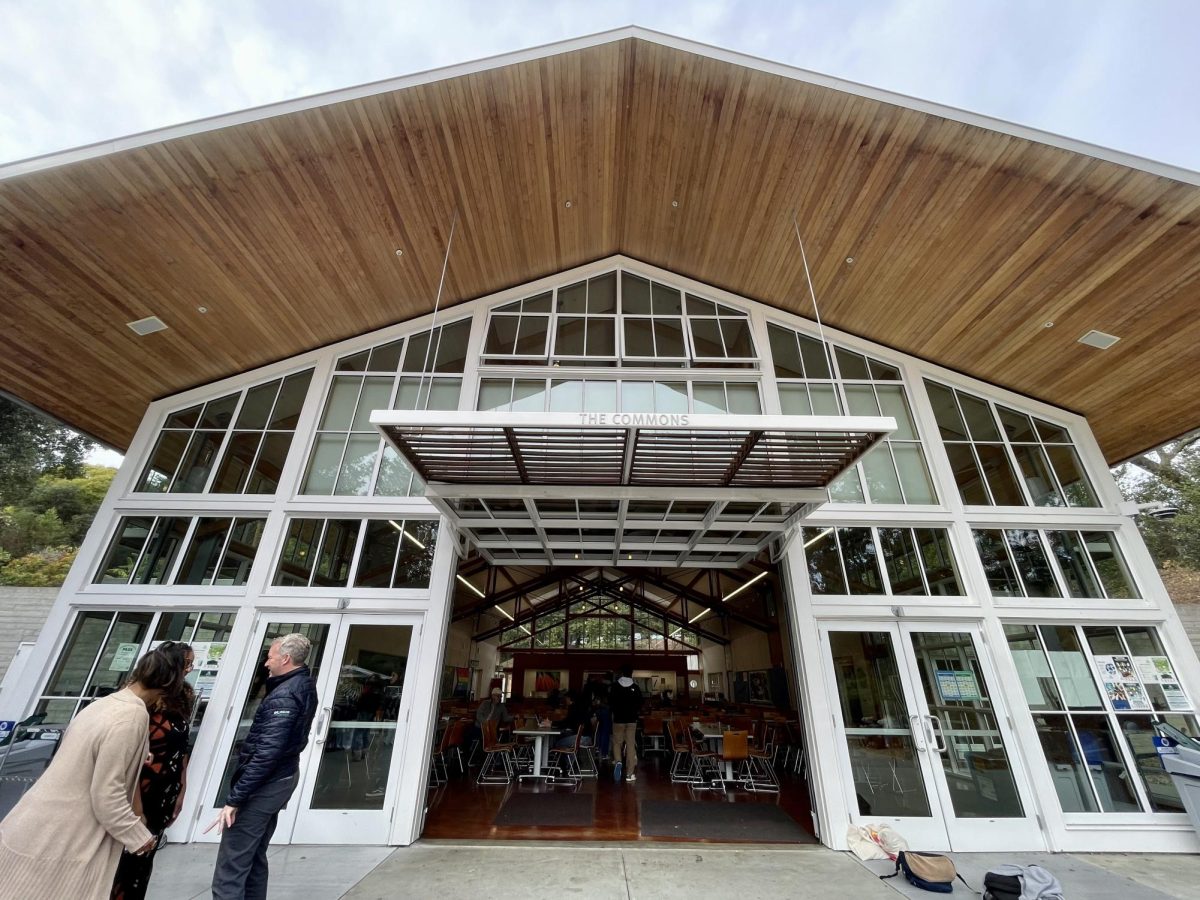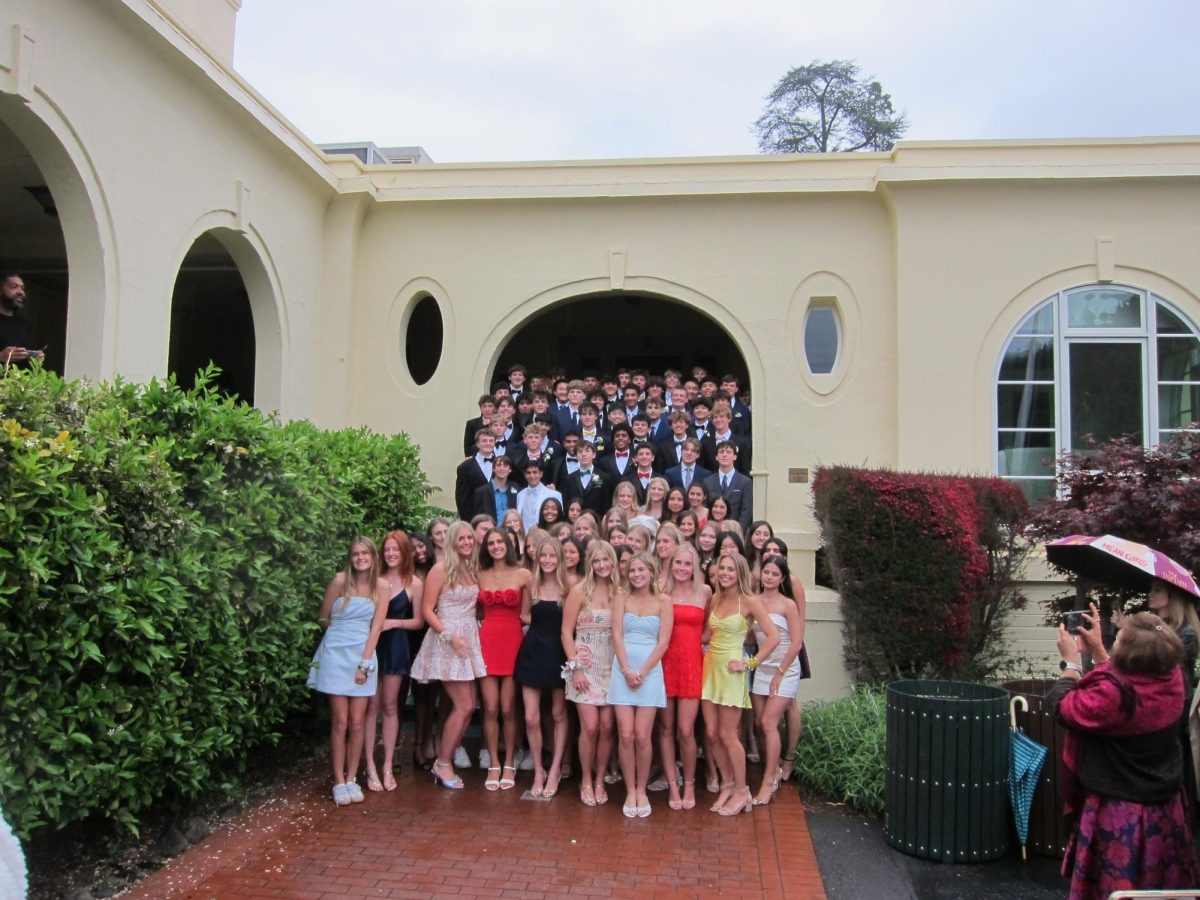At the beginning of the 2022 school year, the first class of 105 students stepped foot onto the Branson campus. A year later, the school welcomed its second expanded class onto campus.
As Branson gradually increases its enrollment by an additional 25 students per grade, students and adults on campus share a variety of perspectives on how they feel the expansion is impacting the community and their daily lives.
“This group in the last couple years has been both numerically large [and] also really significant in terms of fresh perspectives and fresh faces, and it’s awesome,” said Hilary Schmitt, history department chair and the coordinator of faculty education.
Students commute to school from all over the Bay Area. While many older students prefer to drive themselves and park in one of the school-provided parking lots, underclassmen tend to join a carpool.
“We have the largest sophomore and freshman class this year, and they don’t drive, so making sure we have an adequate amount of shuttling to ensure that all the students get to school on time is very important,” said Todd Bickel, director of operations. “This will become even more important as we add 25 more students each year.”
Branson partners with St. Anselms, University of Redlands, the Marin Art and Garden Center and College of Marin to guarantee that students will have sufficient parking. Branson shuttles pick up and drop off students at these locations.
“I think the biggest issue is ensuring that, as we add 25 more students, we aren’t increasing the trips on and off campus exponentially,” Bickel said.
Students kick off their day by heading to the outdoor amphitheater for an all-school assembly, which was added last year. In the past, assembly has been held in the theater, then in the gym. However, the gym no longer fits the expanded student body, so the amphitheater had to be built to comfortably hold the whole school.
That said, students share concerns about the drawbacks of the new space. Alterations have been made to assemblies to accommodate being outdoors.
“I really like the outdoor space, and you can tell a lot of work has been put into the creation of the amphitheater, but it gets frustrating not being able to have amplified sound during assemblies,” said Logan Tusher, student body co-president. “Despite this, I think the community has done a good job of working through these issues.”
After assembly, students head to a day full of engaging classes. As Branson’s enrollment increases, the faculty and staff grow as well. There is a new energy on campus — not only in the faculty, but also in the student body — because of the expansion.
Schmitt said the classroom setting and environment this year has “really dynamic energy that is wholly positive.”
With the increase in students, the seminars for 11th and 12th graders in high demand may have additional sections added. In response to student interest, Schmitt is teaching two sections of upperclassman elective Ethics and Justice this semester.
“When the expanded classes become 11th and 12th graders, I could see there being an opportunity for some new dynamic seminar titles, because there’s a lot of demand for seminars,” she said.
After a morning of classes, students make their way to the commons for lunch. But with the increase in students over the past two years, the lunch line has grown significantly.
“I think [the line] is sustainable this year, but next year we might need to continue to think outside the box more as we continue to add more students,” Bickel said.
While students are happy with many aspects of the expansion, the lunch line is one of their main concerns. Bickel has received feedback from students that the line moves fast but is far too long, along with a few other drawbacks.
“It’s been super nice having an increase in students showing up to sports games, but also the lunch line is longer, and assembly is more crowded,” Sabrina Hwang ‘24 said.
The faculty recognizes this and is still finding ways to solve this growing issue.
“You all have such a finite amount of time and we want to make sure everyone is able to eat, socialize, and do their thing before heading to class,” Bickel said.
At the end of the school day, many students head to the locker room to change for their afternoon sports practice.
Morris Jacoby ‘25 is on the boys’ football and baseball teams this year and has noticed the impact of having additional students in athletic spaces on campus.
He said, “The teams are bigger so there are more teams going in and out of the weight room, so it gets super, super hot. You have to share with a lot of people on the [weight] racks, and wait longer in line to use weights.”
Even so, Jacoby noted the positive aspects of the additional students that contribute to the atmosphere and energy around campus.
“I think the pros of having more students are definitely that there is more spirit around campus and more people who show up to sports events, it feels more alive,” he said.
Sports teams will also be affected with the class size increase, because more students will try out and participate in various sports teams. Consequently, teams might either have to grow their roster size or more cuts will have to be made.
“I think this year, with the two biggest classes being freshmen and sophomores, there will be an increase of skill level on JV teams, although now there may be more cuts,” said Imogen Brown ‘25, who is on the cross country and varsity soccer teams.
In September, architects met with a few students from each grade to discuss the master plan for the Branson campus over the next few years to accommodate increased enrollment. They wanted to hear different ideas for how the campus could be further improved and to take note of the overall themes students brought up.
“It was really interesting how many things they [the architects] have to think about and how the current buildings will be transformed to offer more classroom space,” Gisella Petrone, junior class dean, said. “For the architects, it was interesting to hear the students’ perspective of what they felt like Branson was lacking.”
Gisella shared the main takeaways from the student-architect meetings.
“With more students, the lines at lunch and other things are being taken into consideration to create a better quality of spaces without losing the green, the trees, and the important things that make Branson beautiful,” she said.



